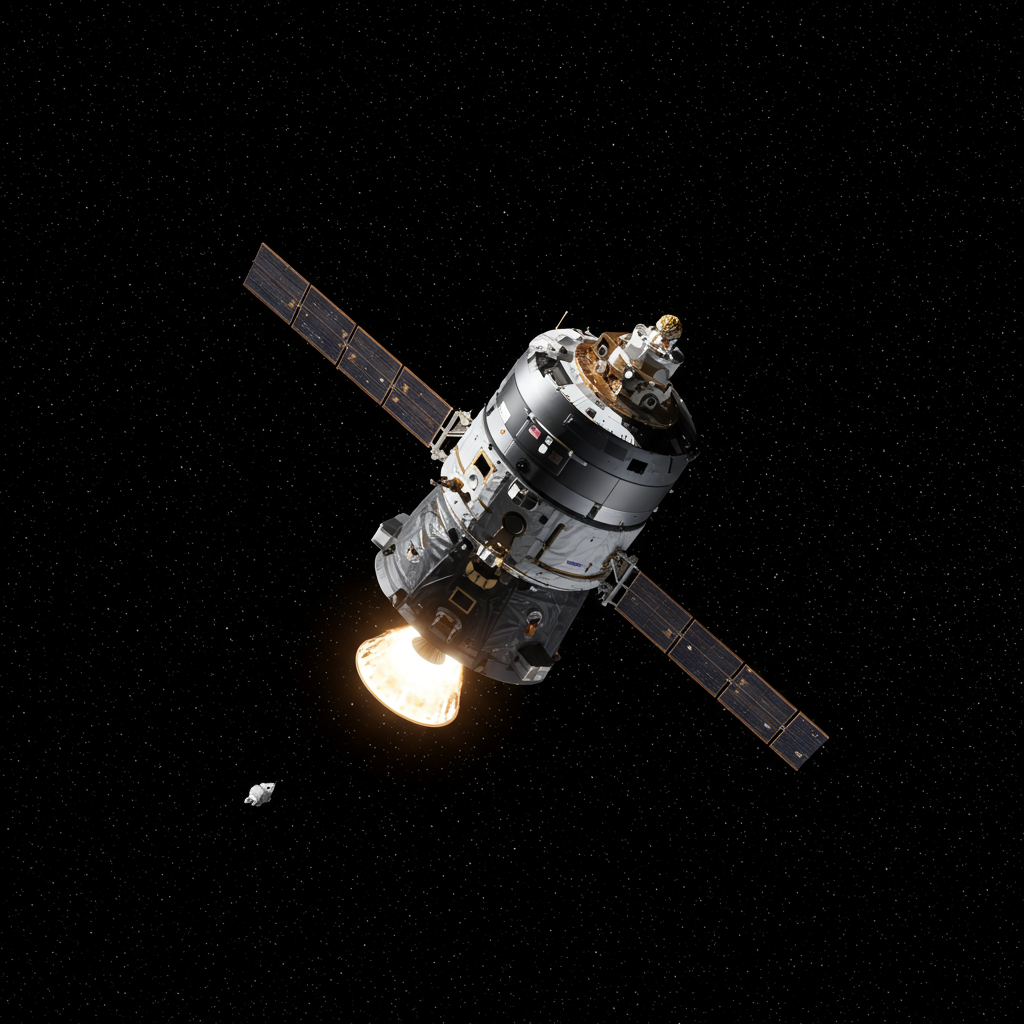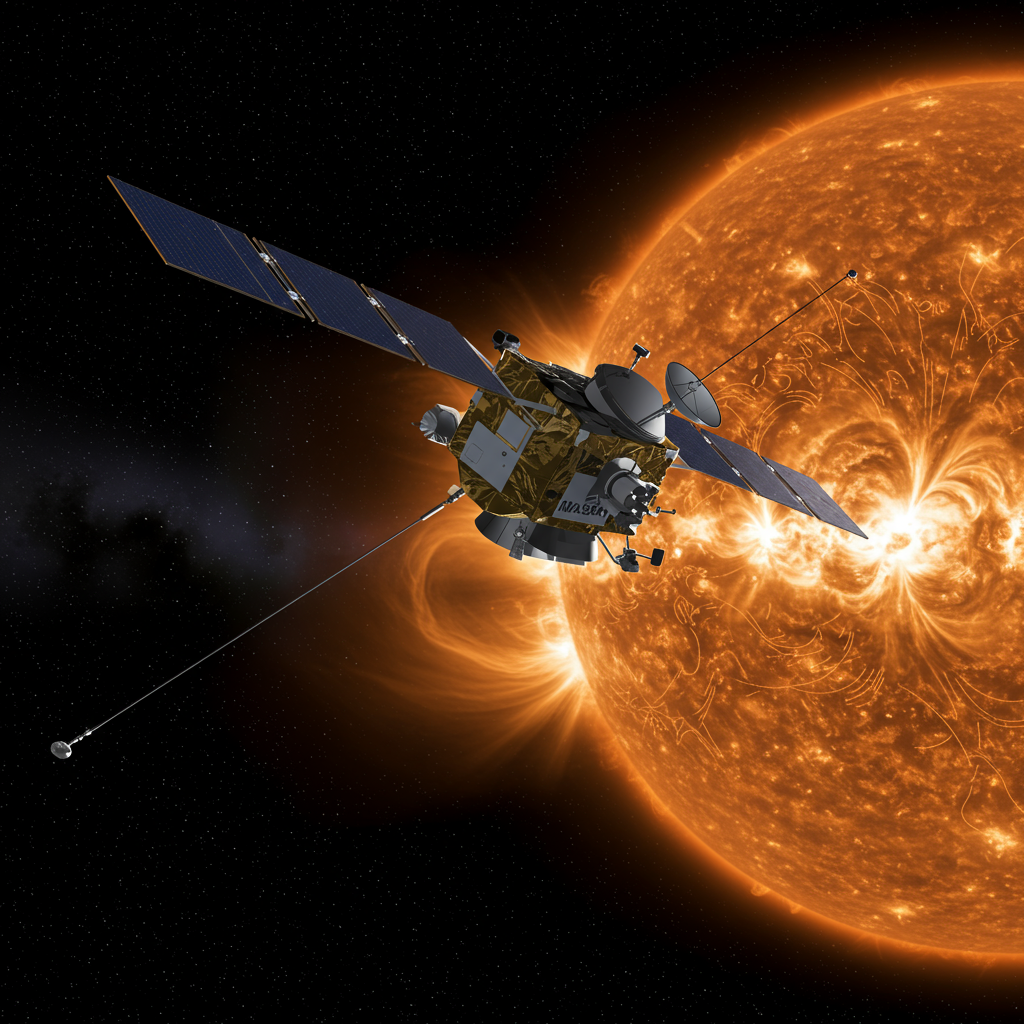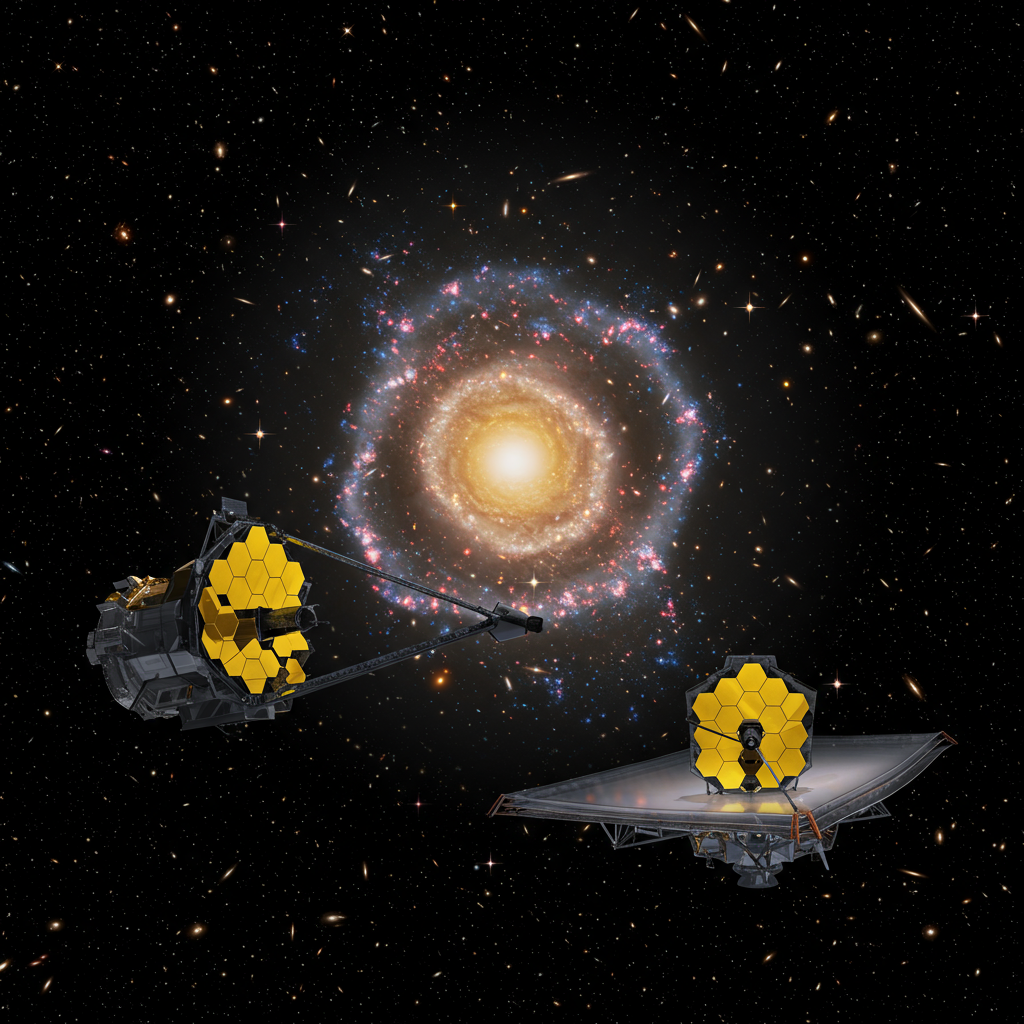NASA and Northrop Grumman have announced a delay in the crucial arrival of the new Cygnus XL spacecraft at the International Space Station (ISS). This significant postponement follows an unexpected propulsion issue. The advanced cargo craft, designated NG-23, experienced an early shutdown of its main engine during vital orbit-raising maneuvers. Mission managers are now diligently assessing an alternative engine burn plan. This incident underscores the intricate challenges of space logistics. It also highlights the critical importance of successful resupply missions to sustain the orbiting laboratory.
Unexpected Propulsion Glitch Halts Cygnus XL Rendezvous
The NG-23 Cygnus XL spacecraft, named the S.S. William ‘Willie’ C. McCool, faced a propulsion anomaly early Tuesday morning. Its main engine prematurely ceased operations during two planned burns. These burns were essential for precisely raising the spacecraft’s orbit. They would have aligned it for rendezvous with the ISS. NASA, in a blog post, confirmed the premature shutdowns. The agency did not immediately disclose the exact duration of the successful burns. The root cause of the engine’s unexpected behavior remains under investigation.
Despite the propulsion hiccup, NASA has reassured the public. All other Cygnus XL systems are reportedly performing normally. This indicates a localized issue with the main engine’s burn sequence. Mission managers are currently reviewing various plans. They aim to conduct the remaining rendezvous maneuvers safely. A new arrival date and time for the cargo vessel are pending. Its original docking with the International Space Station was set for Wednesday morning.
Launch and Initial Successes of the Debut Cygnus XL
The NG-23 mission began auspiciously on Sunday, September 14. A SpaceX Falcon 9 rocket successfully launched the Cygnus XL spacecraft. Liftoff occurred at 6:11 p.m. (2211 UTC) from Space Launch Complex 40 (SLC-40). This launch site is at Cape Canaveral Space Force Station in Florida. The cargo ship separated from the rocket’s upper stage over 14 minutes post-liftoff.
Initial mission phases proceeded smoothly. NASA reported the vehicle successfully deployed its two UltraFlex solar arrays. This occurred approximately 90 minutes after departing the space coast. These prominent cymbal-shaped arrays are a hallmark of the Cygnus design. Astronaut Jonny Kim was originally slated to capture the Cygnus XL at 6:35 a.m. EDT. He would use the station’s Canadarm2 robotic arm. Fellow NASA astronaut Zena Cardman would assist him. This maneuver was planned when the Cygnus XL was just 10 meters from the ISS.
Why the Cygnus XL is a Game-Changer for ISS Resupply
This NG-23 mission marks the highly anticipated debut of the Cygnus XL. It represents a significant upgrade to Northrop Grumman’s cargo fleet. As its name suggests, this is a larger variant of the standard Cygnus spacecraft. The Cygnus XL measures about 1.6 meters (5.2 ft) longer than its predecessors. This increased size translates directly to enhanced cargo capacity. It can support approximately 2,600 pounds of additional supplies.
“It’s got 33 percent more capacity than the prior Cygnus spacecraft had,” explained Ryan Tinter. He serves as vice president of Civil Space Systems for Northrop Grumman. Tinter highlighted the strategic importance of this expansion. “Obviously, more may sound like better, but it’s really critical because we can deliver significantly more science as well as we’re able to deliver a lot more cargo per launch, really trying to drive down the cost per kilogram to NASA.” This new capability aims to optimize efficiency and cost-effectiveness for future ISS resupply operations.
Critical Supplies Aboard the NG-23 Mission
The Cygnus XL carries a massive payload. Over 11,000 pounds (4,990 kg) of essential supplies are onboard. This cargo includes food, critical science experiments, and vital equipment. Dina Contella, NASA’s ISS Program deputy manager, detailed the contents. “The NG-23 vehicle is packed with consumables, like nitrogen, oxygen, food and toilet parts.” She added, “And it has a large number of spare parts that are required for systems, for example, like our urine processor.”
Contella stressed the mission’s importance for maintaining station operations. “We’re stocking up on these items since we were short over the past year.” She emphasized the goal: “We’d like to have a good reserve for the future.” This highlights the continuous demand for logistical support at the orbiting outpost. The delay, therefore, has significant implications for ISS resupply planning.
Navigating a Dynamic ISS Cargo Schedule
The current Cygnus XL delay adds to recent disruptions in NASA’s cargo schedule. Earlier in the year, the Cygnus spacecraft for the NG-22 mission suffered damage. It happened during shipping from Virginia to Florida’s Kennedy Space Center. This incident forced the cancellation of its June 2025 launch.
To compensate, NASA swiftly adjusted its cargo mission plans. They reallocated cargo on SpaceX’s CRS-32 mission. This involved prioritizing consumable supplies and food. It came at the expense of some planned research. NASA also advanced the schedules for SpaceX’s CRS-33 and the NG-23 missions. This proactive approach aimed to close gaps in ISS resupply runs.
Dana Weigel, NASA’s ISS Program manager, outlined their strategic buffer. “In general, what we’ve done historically is we like to have four months of supplies onboard.” She explained the rationale. “The goal is really, if you have a problem with the next mission, if for some reason that can’t fly, you can make it to the mission after that.” This demonstrates NASA’s robust contingency planning. Despite these efforts, unexpected issues, like the Cygnus XL propulsion issue, can still arise.
Commercial Resupply Services: Partners and Past Challenges
Northrop Grumman and SpaceX are NASA’s primary U.S. partners. They conduct Commercial Resupply Services 2 (CRS-2) missions. Sierra Space also holds a CRS-2 contract. Their Dream Chaser spaceplane is yet to launch. Both active providers have encountered in-flight anomalies. This occurred early in their cargo flight histories. SpaceX has completed 31 flights, with one Cargo Dragon currently at the station. Northrop Grumman has successfully executed 20 cargo flights.
Northrop Grumman currently utilizes SpaceX’s Falcon 9 rockets for its Cygnus missions. Simultaneously, it develops its Antares 330 rocket. This is a partnership with Firefly Aerospace. Its inaugural launch is anticipated in 2026. This dual strategy ensures continued cargo access while developing new launch capabilities. The Cygnus XL mission’s propulsion issue is part of this complex operational landscape. Past issues include a Cygnus NG-18 failing to deploy a solar array in 2022. The NG-21 mission also had a “late entry to burn sequencing” problem with its main thruster.
The Path Ahead for Cygnus XL and Future Cargo Missions
Flight controllers are actively developing an alternative burn plan. This is crucial for guiding the NG-23 Cygnus XL to the station. A new arrival date for the ISS remains under review. Once successfully berthed, the Cygnus XL is expected to stay at the Unity module’s Earth-facing port until March 2026. This extended stay positions it as a vital storage facility.
Following the eventual arrival of the Cygnus XL, the next scheduled cargo mission is HTV-X. Mitsubishi Heavy Industries supplies this spacecraft. It is supported by the Japanese Aerospace Exploration Agency (JAXA). HTV-X is slated to launch on an H3 rocket from Japan on October 21. These ongoing missions underscore the continuous and demanding nature of maintaining the International Space Station.
Frequently Asked Questions
What caused the Cygnus XL spacecraft’s arrival delay at the ISS?
The Cygnus XL spacecraft, designated NG-23, experienced a propulsion issue during its journey to the International Space Station. Its main engine prematurely ceased operations during two critical orbit-raising burns. This prevented the spacecraft from achieving the correct trajectory. NASA and Northrop Grumman are currently assessing an alternative engine burn plan. While the engine encountered trouble, all other systems aboard the Cygnus XL are performing as expected. The specific cause of the early engine shutdown is under investigation.
Who are the main partners involved in ISS resupply missions?
The primary U.S. partners for International Space Station resupply are Northrop Grumman and SpaceX, operating under NASA’s Commercial Resupply Services 2 (CRS-2) contract. Northrop Grumman utilizes its Cygnus spacecraft, currently launching on SpaceX’s Falcon 9 rockets while developing its Antares 330. SpaceX uses its Dragon cargo spacecraft. Sierra Space also holds a CRS-2 contract for its Dream Chaser spaceplane, though its first launch is pending. Additionally, international partners like Japan’s JAXA (with its HTV-X) and Russia (with its Progress vehicles) also conduct vital cargo missions to the ISS.
Why is the Cygnus XL NG-23 mission particularly critical for the ISS?
The Cygnus XL NG-23 mission is critical for several reasons. First, it marks the debut of the larger Cygnus XL variant, offering 33% more cargo capacity. This allows for increased delivery of scientific experiments and essential supplies, improving cost efficiency. Second, it carries over 11,000 pounds of vital consumables, including nitrogen, oxygen, food, and critical spare parts. These items are crucial for “stocking up” after recent shortages. Finally, this mission helps compensate for previous disruptions in the ISS cargo schedule, such as the damaged NG-22 spacecraft, reinforcing NASA’s strategy of maintaining a four-month supply buffer against future mission delays.
The propulsion issue affecting the Cygnus XL spacecraft highlights the inherent complexities of space exploration. While the delay requires careful planning and revised maneuvers, the resilience and expertise of NASA and Northrop Grumman teams are now in full focus. This NG-23 mission remains vital for the continued operations and scientific endeavors aboard the International Space Station. Its successful eventual arrival will reinforce the robustness of commercial resupply services and the collaborative spirit of human spaceflight.




